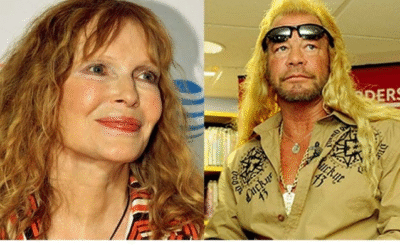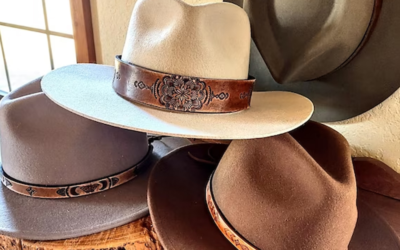When you hear the La Fonda Sue Honeycutt, you might immediately think of her association with the famous television bail‑bonds world and the high‑profile name of Duane “Dog” Chapman. But what this really means is a story of a young woman from Texas who married early, faced big life changes, and chose a different path than the public fame that surrounded her former partner. In many ways her journey speaks to resilience, family focus, and making quiet choices.
Early Years and Roots
La Fonda Sue Honeycutt was reportedly born on January 20, 1953 in Pampa, Texas, into a family with strong small‑town values and community bonds. Growing up in that setting meant that family, connection with neighbours, and modest ambitions were important. While sources are limited about her childhood, this background set the tone for how she would handle significant life transitions later on.
Meeting Duane Chapman
In the early 1970s, La Fonda Sue Honeycutt met Duane “Dog” Chapman when his life was still far from the television fame that would later define him. According to some sources, Chapman said he couldn’t take his eyes off her when they met. From that meeting emerged a relationship, then a marriage, and then the dramatic shifts that followed.
Marriage at a Young Age
La Fonda and Chapman married on April 1, 1972 in Texas, when she was about 19 or 20 and he was around 19. Their union was young, eager, and full of promise—but also soon faced serious challenges. Early marriage tends to bring both excitement and pressure, and their story was no exception.
Parenthood and Growing Family
Shortly after marrying, La Fonda Sue Honeycutt gave birth to her first son with Chapman, Duane Lee Chapman II, in 1973, and then to Leland Chapman in 1976. She stepped into motherhood while her husband’s life was shifting in unexpected ways. Guiding two young boys in the early years of their family required strength and focus—even amid uncertainty.
The Marriage Under Strain
Despite the hopeful start, the marriage of La Fonda Sue Honeycutt to Chapman ran into real trouble. His past legal troubles and personal choices weighed heavily on family life. There are accounts of infidelity and of the struggle to build stability in a life that was constantly shifting. For La Fonda, the stakes were not just about one person—they were about children, safety, and future.

The 1976 Legal Crisis
In 1976 Chapman was involved in a serious murder case in Texas, which led to his conviction and prison time. During that period, the tension in the home reached a breaking point. For La Fonda Sue Honeycutt, the challenge shifted from daily family life to managing the consequences of external events in a marriage under pressure.
Divorce and New Beginnings
La Fonda Sue Honeycutt filed for divorce in 1977 while Chapman was serving time in prison. The split was a turning point. For her, it marked the transition from one part of life into another—one defined less by public association and more by her own decisions and priorities.
Second Marriage and Stability
After her divorce from Chapman, La Fonda Sue Honeycutt later married Jim Darnell and had two daughters with him. This chapter of her life is often described as more private, more stable, and more focused on everyday family life rather than spotlight or fame. It shows how she shifted her trajectory.
Raising Children Away from Fame
Throughout these years, La Fonda Sue Honeycutt focused on her role as a mother and homemaker rather than on claims to celebrity. Sources say she chose privacy rather than public recognition. Her children from her first marriage include two sons who later became public figures, but her own presence remained grounded, home‑based, and steady.
Life Beyond the Cameras
While her former husband achieved television fame and public recognition, La Fonda Sue Honeycutt deliberately stayed away from that spotlight. That decision speaks volumes: choosing another route, one of quiet life, family connection, and personal peace rather than public commentary or media presence.
The Influence on Her Children
Her sons, Duane II and Leland, both later became involved in their father’s bail‑bonds business and television appearances. Yet their foundation had roots in La Fonda’s early parenting, stability, and example—elements that likely shaped how they pursued their roles in life and work.
Legacy of Quiet Strength
When we consider La Fonda Sue Honeycutt, the legacy is less about public records and more about the values she lived: family, responsibility, resilience. Her story might not be splashed across reality TV, but it reflects a consistent choice to prioritise meaningful things over visibility.
Her Life in Context
Putting her story in context means recognising that she lived through early marriage, legal crises affecting her household, divorce, remarriage, and a choice of privacy. Each of these could have derailed a life—but instead she drew new paths. That context enriches the understanding of her role in the wider Chapman family narrative.
What We Don’t Know
Because La Fonda Sue Honeycutt kept a low public profile, many details of her personal and professional life remain unclear. People often ask: What did she do for work later? Where does she live now? The lack of public detail is itself part of her story—choosing to step back rather than step forward.
Why Her Story Still Resonates
Her story continues to draw interest because of the public fascination with the Chapman family and their reality‑TV legacy. Yet beneath that fascination, there is a human story: a woman facing big changes, making difficult decisions, and focusing on what mattered. That’s something many people relate to.
Lessons from Her Journey
From her life we can take several lessons: youth doesn’t guarantee stability, fame isn’t the only measure of success, and choosing peace over public presence can be a valid path. La Fonda Sue Honeycutt’s story reminds us that quiet lives can hold powerful meaning.
How Her Path Differs
Unlike many ex‑wives of public figures who stay in the limelight, she opted out. She didn’t pursue media attention or brand herself. That difference is noteworthy. It shows that owning your own narrative sometimes means stepping off the stage.
Reflection on Family and Identity
Her identity is entwined with motherhood, home‑life, and legacy rather than fame. Her role in the Chapman family is vital—not as the star, but as a foundational figure. When people trace family trees or media stories, they often start with her.
Present Day and Looking Ahead
As of now, she is reportedly in her seventies and living a private life away from TV cameras and headlines. The fact that she is still part of the family story, yet lives privately, is part of what makes her interesting: presence without exposure.
Final Thoughts
The La Fonda Sue Honeycutt might not be in neon lights, but her story is meaningful. It’s about a woman navigating marriage, parenthood, change, and choice. In a way, what matters isn’t how public the story is—it’s how real it is. Her life speaks to authenticity more than spectacle.
FAQs
Q1: Who is La Fonda Sue Honeycutt?
She is best known as the first wife of Duane “Dog the Bounty Hunter” Chapman, and the mother of his two sons, Duane Lee II and Leland Chapman.
Q2: When did she marry Chapman and when did they divorce?
She married him on April 1, 1972 in Texas and the divorce occurred in 1977 while Chapman was serving time in prison.
Q3: How many children does La Fonda Sue Honeycutt have?
She has four children: two sons (Duane Lee II and Leland) with Chapman, and two daughters (Britney and Hannah) with her second husband, Jim Darnell.
Q4: Why did she remain out of the public spotlight?
She chose a quiet, private life focused on family, rather than public recognition or media exposure. Many sources say she prefers privacy and home‑life over interviews or social media.
Q5: What is her legacy?
Her legacy lies in her role as mother, homemaker and stabilising influence in a family that was later thrust into public view. She demonstrates that meaningful lives don’t always make the headlines—but they matter
Read Also: Discover Bayard Martensen Family, Career, and Personal Insights








